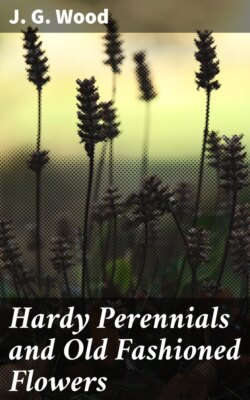Читать книгу Hardy Perennials and Old Fashioned Flowers - J. G. Wood - Страница 29
На сайте Литреса книга снята с продажи.
Anemone Vernalis.
ОглавлениеTable of Contents
Shaggy Windflower; Nat. Ord. Ranunculaceæ.
A curious but pretty alpine species, from the Swiss Alps, consequently very hardy. It is not a showy subject, but its distinctions are really beautiful, and commend it to those who love to grow plants of a recherché character.
The illustration (Fig. 12) will give some idea of it, but no description can convey even an approximate notion of its flowers, which are produced singly, on short, stout, hairy stems, about 5in. high. For so small a plant the flower is large, more than an inch across when expanded, but usually it keeps of a roundish, bell-shaped form. Its colour is a bluish-white inside, the outside being much darker. It would be violet, were not the hairs so long and numerous that they form a brownish coat which is, perhaps, the most remarkable trait of this species. The leaves, too, are very hairy—twice, and sometimes thrice, divided, rather small, and also few.
Fig. 12. Anemone Vernalis (Shaggy Anemone). (One-half natural size.)
This little plant is most enjoyed when grown in pots. It may be plunged in sand or ashes in an open space, but it should never be allowed to suffer for moisture. When so grown, and just before the flowers open, it should be removed to a cool, airy frame, where it should also be plunged to keep its roots cool and moist; it will require to be very near the glass, so as to get perfect flowers. Such a method of growing this flower affords the best opportunity for its close examination; besides, it is so preserved in finer and more enduring form. It thrives well in lumpy peat and loam, but I have found charcoal, in very small lumps, to improve it, as it does most plants grown in pots, especially such as require frequent supplies of water. The slugs are very fond of it; a look-out for them should be kept when the plants are growing, and frequent sprinklings of sharp ashes will be found useful.
Flowering period, April and May.
